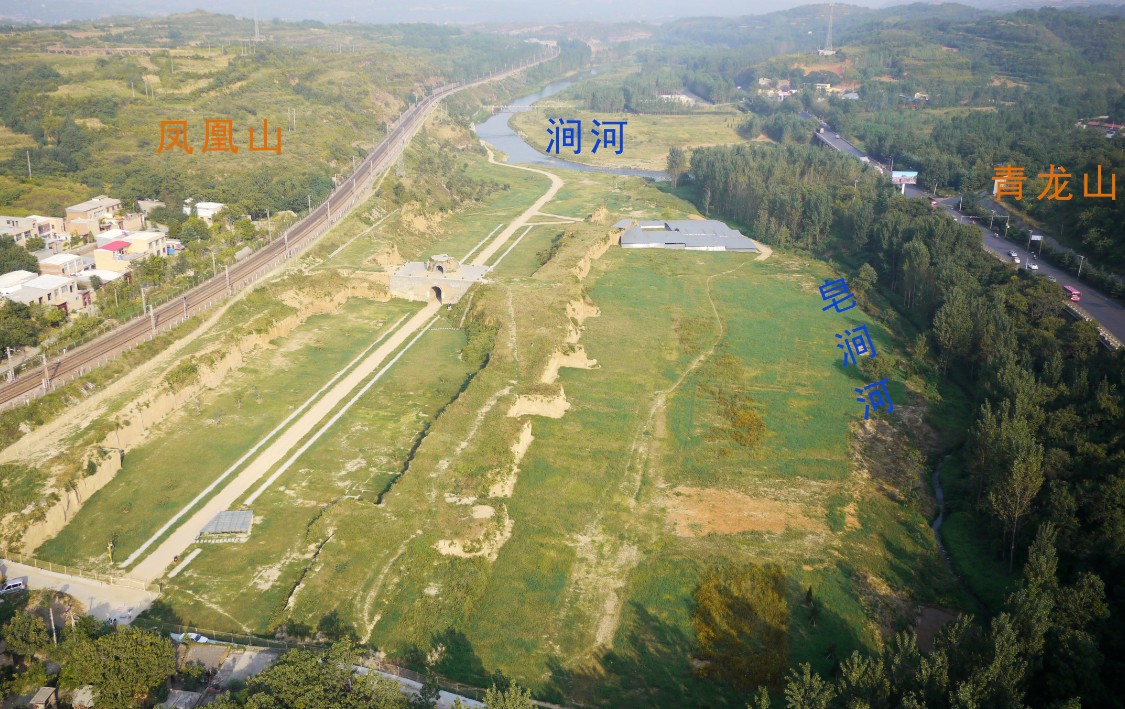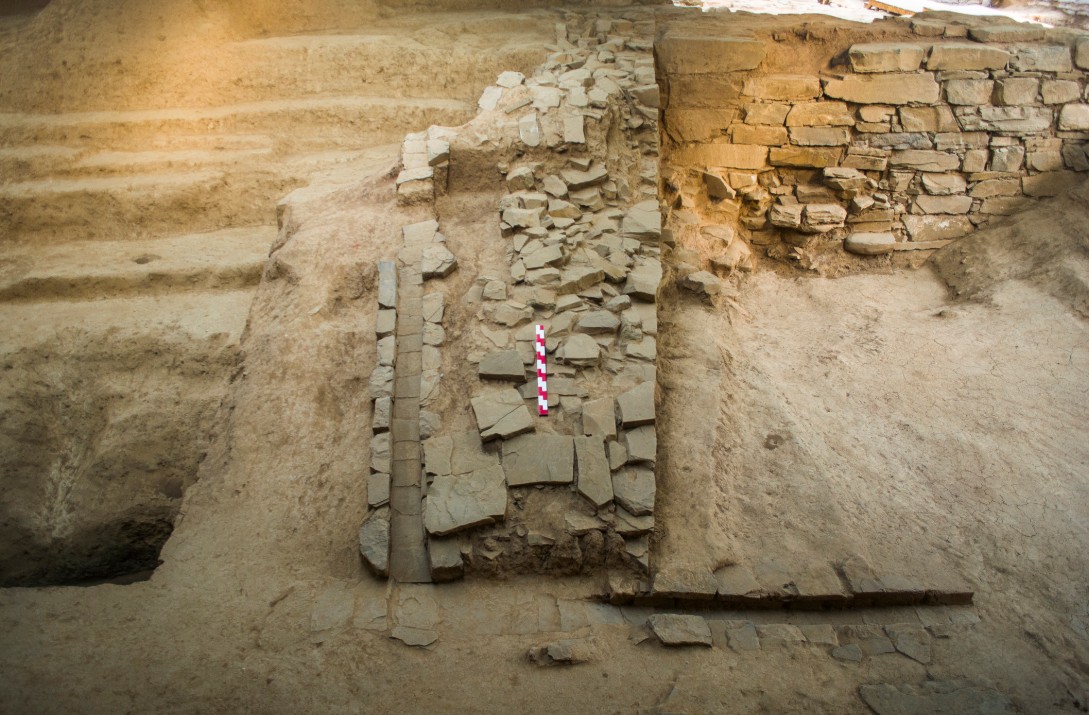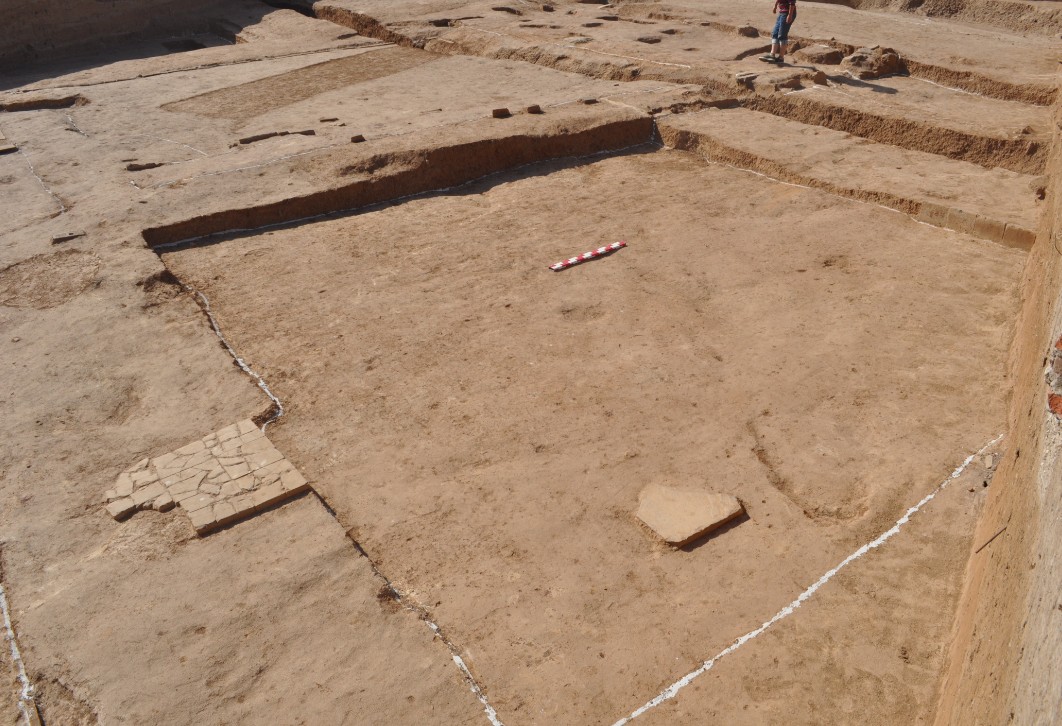Hangu Pass--the 2100 years ago’s pass site found in Henan province
From:Chinese Archaeology NetWriter:Date:2014-04-25
Hangu Pass was located in Xinan County, Luoyang City. It has been more than 2100 years old, since Yang Pu built the Pass in Western Han Dynasty (114 BC). Hangu Pass was an essential gate in Guanzhong area (middle part of Shaanxi province) during Western Han Dynasty, after moving the capital to Luoyang in Eastern Han Dynasty, Hangu Pass was still the most important passes among the eight, composing the defending system surrounding Luoyang basin. Hangu Pass had been playing an important role in military pass until Sui and Tang Dynasties. Meanwhile, it was an important point along the Silk Road, as well as the first pass to go to the west, therefore, it was not only an important military pass but also witnessed the prosperity of trading on the Silk Road. It was listed as the beginning of the Silk Road and the corridor of Tianshan’s cultural heritage, leading the application for the transnational world heritage. To figure out the site’s distribution and cultural connotation, Luoyang cultural relics and archaeological institution conducted an investigation and excavation for the site.

overall view of the site
The archaeological field work had been started since June, 2012, ended in October, 2013, reaching 139,000 square meters, while the excavated area reached 3,325 square meters, acquired great significance, finding 17 rammed walls, 2 ancient roads, 2 rammed earth platforms, and 9 activity surfaces. The general layout of the site was clear. The main remains were walls, roads and building foundations, etc.
Walls
The eastern and southern walls of the Pass were partly revealed, which was quite magnificent. The width of the walls reached 22 m, and the north part was rammed, while the south part near to Zaojian River was built by stones. The rammed parts were consisted of platform base and wall, and the platform base was as wide as 31 m from east to west, while as tall as 2.8 m, the east and west parts were laddered up reaching the top platform. The walls were rammed on the platform. The south wall was built by sandstone, which was upright without platform base. Near the eastern wall found dike dams, drainage, and riding tracks, etc. The southern walls of the Pass were built along the river, presented as an arc, excavated about 150 m long, as wide as 8 to 18 m, which were rammed and paved by gravels on the bottom.

remains of drainage and riding tracks near the east wall
Ancient Roads
There found 2 ancient roads, headed from east to west. One of them located in the middle part of the site, and inferred a length of about 370 m by prospecting. Based on the dissection of the roads’ section, its thickness was reached 2.3 m, classified into 12 phases, from the founding of the Pass in West Han Dynasty till now. This thousand years old road was also a part of the Silk Road. The other road located in the south part of the site, the length achieved about 360 m by prospecting, and as wide as 10 to 15.7 m, dating back to Eastern Zhou to Western Han Dynasties, which was the ancient road built before the founding of the Pass, after which it was cut and discarded.
Building foundation
The excavated area reached 900 square meters. The site was belonged to two phrases, which were all Eastern Han Dynasty. Among the first phrase building there were found remains of passageway, activity surfaces and drainages, etc. The passageway were vertical crossed, rammed by lots of red sandstone, part of which remained paved bricks and covered bricks, as wide as 1.9 m. 8 trampled surfaces were found, the well preserved activity surfaces was presented as a square, as long as 8.2 m. There’s a drainage built by stone in the south side, which should be the buildings’ drainage facility. The second phrase’s buildings were damaged greatly, only found 4 rammed platform base and scattered pillar base stones, and the walls were ruined.

remains of passageway and activity surfaces in the buildings
Unearthed Remains
Most of them are building materials which were mainly made of clay, including eaves tiles, semi-cylindrical tiles, plate tiles, hollow bricks, square paving bricks, narrow bricks and building components, among which mainly were plate tiles, then semi-cylindrical tiles. The unearthed pottery, porcelain, iron, and bronze totally numbered 250 pieces, and 108 coins.

bricks inscribed with characters “关”
Based on the present archaeological work, the layout of the site was clear, which is a small and narrow city site headed from east to west, along the gorge, forming an important defending and traffic controlling pass. The south part of the site was the main living area. In the middle of it there was a long and narrow passageway from east to west, which is the only way out. According to the remains and artifacts, it could be confirmed that the walls, buildings and roads were all built in Han Dynasty.
The passes system developed significantly during Qin and Han Dynasties, however, the archeological materials of the pass sites was quite deficient. As one of the most important passes in Han Dynasty, the archeological discovery of Hangu Pass took an essential place in the academic study. This discovery provided not only great references for the study of passes’ system but also guidance for the protecting of the pass, as well as a great support to the Silk Road’s application for world heritage.
(Translator: Lang Langtian)
(Translator: Lang Langtian)

